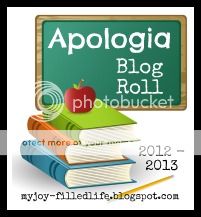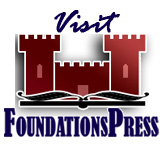Thanks to reader Shoshanna for writing this for us!
Hanukkah means dedication, so it is known as the Feast of Dedication (or re-dedication), and it is also known as the Festival of Lights. It is not a commanded feast, but it is fun, and there is a lot to learn from it as well, so why not celebrate it? This holiday occurred between the two testaments and thus is not mentioned in the Old Testament but is in the New Testament (John 10:22).
Most of us are familiar with part of the story — when Temple control was wrested from Antiochus IV, there was only oil for one day for the menorah, but it lasted eight days. The interesting thing about this is that the oil is not mentioned in the book of Maccabees. The story is the military victory of a small band of Jewish people fighting against a much bigger army and they were fighting for the right to worship Adonai the way He told them. This link explains more about what led up to the Maccabean revolt:
http://www.emetministries.com/Chanukkah Everday.pdf
Hanukkah was basically a celebration of a second Sukkot/Feast of Tabernacles/Feast of Booths celebration.
“In the Second Book of the Maccabees, which quotes from a letter sent circa 125 BCE from the Hasmoneans to the leaders of Egyptian Jewry, the holiday is called “The festival of Sukkot celebrated in the month of Kislev (December),” rather than Tishrei (September). Since the Jews were still in caves fighting as guerrillas on Tishrei, 164 BCE, they could not properly honor the eight-day holiday of Sukkot (and Shemini Atzeret), which is a Temple holiday; hence it was postponed until after the recapture of Jerusalem and the purification of the Temple.” (http://www.myjewishlearning.com/holidays/Jewish_Holidays/Hanukkah/History/Maccabean_Revolt/First_Hanukkah.shtml?HYJH)
In fact, the miracle of the oil was not mentioned until the Babylonian Talmud.:
“Next, look at the writings of Josephus, c. 70-100 CE, (originally) a Pharisee, and you will see much the same thing – no mention anywhere of a miracle concerning a flask of oil which lasted for eight days. Josephus states that Hanukah is known as the Festival of Lights, but the explanation he gives for the appellation has nothing to do with miraculous oil: ‘And from that time to this we celebrate this festival, and call it Lights. I suppose the reason was, because this liberty beyond our hopes appeared to us; and that thence was the name given to that festival.’3 (Source: http://www.karaiteinsights.com/php/article.php5?id=05)
Now that we have some history about this holiday, I can move on to the more pressing question of how one can celebrate this holiday. The traditional colors used for this holiday are blue, white and silver. You can use snowflake placemats or tablecloths…take them out for Hanukkah and then if you celebrate Shabbat, you can use them for winter Shabbats each week. I use different shades of blue either in glasses, candles and candleholders, marbles, or even small ornaments.
Since it is the festival of lights I use lots of candles besides the chanukkiah (also known as menorah), and I also like to pick up mirrored plates to put under the candles. The dollar store is good for getting those in various shapes and sizes. You can also put up blue and white lights…I have noticed this year that there are light strands with small snowflakes as the light shapes.
Traditional foods are latkes, gelt, doughnuts. Latkes can be baked and can be made with all types of variations in them. Gelt are chocolate coins wrapped in blue or silver with pictures of menorahs on them. If you can’t find those you can use other chocolate coins as long as they don’t have Christmas stuff on them. Latkes and doughnuts are usually not eaten all eight days especially if they are fried. You are free to eat them all eight days if you like. That is the nice thing about tradition-you can do as much or as little as you like. You can do a search for how to make latkes and there are also mixes and some stores even have frozen latkes you can use.
I referred to this earlier, but I want to go over the differences between a chanukiah and a menorah. Many people will refer to the nine branched candelabra as a menorah, but to be technically correct, that would be a chanukiah. A menorah is the seven branched candelabra used at the Temple.
Gelt is often given out to children and adults alike as gifts and they are also used in the dreidel game, as well as any pother small candies, marbles, pennies, etc…. Here is basic information on how to play the game: http://www.myjewishlearning.com/holidays/Jewish_Holidays/Hanukkah/At_Home/Dreidel/How_To_Play.shtml
There are numerous resources to be found on the internet regarding Hanukah. Here are some more you might find helpful-some are from Messianic sources, some are not.
- This first one is a book for children with two printing options: http://www.torahfamily.com/hanukkah.htm
- This site gives you a nightly checklist of New and Old Testament scriptures to read and discuss-you will need to scroll down to the end of the article to see those: http://www.elshaddaiministries.us/audio/more/chanukkah.html
All the sites I have listed will give you a good idea about how to celebrate His Feast Days. Here are some more sites for learning about the Hebrew and Jewish roots:
- http://www.hebrew4christians.com/index.html
- http://www.torahtots.com/
- http://www.akhlah.com/
- http://www.aish.com/
- http://bereansonline.org/
- http://www.ancient-hebrew.org/
I hope you have found this helpful and that you will enjoy celebrating this Festival of Dedication and remember to rededicate yourselves to Him.
Truthfully I could go on and on about this holiday, but hope I have given you a good foundation to start off with for celebrating this holiday.
Chag Sameach! (Hebrew for Happy Holidays). Happy Hanukah!
~Shoshanna
About Shoshanna: “I am married with one blessing. I have been celebrating the Feasts of the Lord for close to a decade now and each year I learn more about Yeshua (Jesus) through celebrating them. I am also the dance leader for my congregation and truly enjoy worshiping Him through dance.”



After study and prayer, we no longer use the hanukkiah in our observance, simply because it is not true. For years we did the lighting, but were recently disturbed to find that it is legend. We believe it takes away from the true story of Hanukkah, which needs no embellishment. It was a clash of worldviews, Greek vs. Hebrew/YHWH.
Also, study needs to be done about the “star of David” which figures prominently in most Jewish/Hebrew roots things…the real story/history behind that is disturbing as well. We have tried to purge our house of that.
We just want to follow HIM, not tradition, especially if tradition is not true and/or against Him and His Word. Quoting Jim Staley, a Torah teacher:
Let the Bible alone be the determining source for our doctrine. And let the doctrines and traditions of men fall into oblivion. Mar 7:9 And he said unto them, Full well ye reject the commandment of God, that ye may keep your own tradition.
Cindy
I do know about the Star of David and that it is pagan. I have noticed it is very hard to get leadership in congregations to acknowledge that and remove it.
The symbol of Israel is the menorah-the seven branched one.